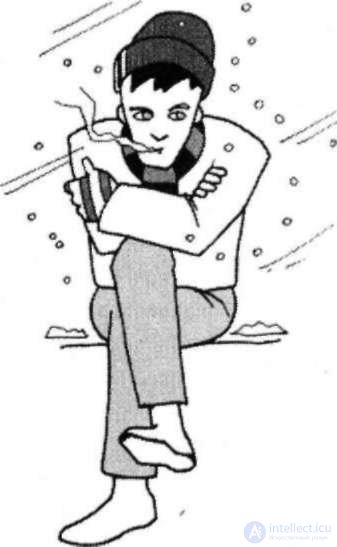Everything seen and heard in a certain situation does not necessarily reflect the real relationships between people. In order to correctly interpret what is happening, you must follow three rules.
The first rule: interpret gestures in the aggregate
One of the most serious mistakes newcomers make is to try to interpret gestures in isolation, apart from other gestures and suggested circumstances. For example, scratching your head can mean anything: insecurity, forgetfulness, deception, dandruff, or increased sweating. You must take into account other gestures accompanying the analyst. As in oral speech, there are words, sentences and punctuation marks in the language of body movements. Every gesture is like a word, and many words can have several meanings. For example, the word "dressing" in the English language has at least a dozen meanings. This is the process of dressing, and seasoning to food, and stuffing for poultry, and dressing on the wound, and fertilizer, and caring for horses.
To understand the true meaning of a word is possible only when you consider it in context, in conjunction with other words. The sequence of gestures that form "sentences" is called chains. They reveal to us the true thoughts and feelings of the interlocutor. The chains of body language, like verbal sentences, must consist of at least three words so that you can accurately understand the meaning of each of them. The receptive person freely reads the “sentences” of the body language and finds in the oral speech the sentences corresponding to them.
|
Scratching the back of the head can be a sign of insecurity, but also a symptom of dandruff.
| |
It is always necessary to highlight the chain of gestures. Only in this way can you correctly interpret the signals of the body language. Each of us has one or several repetitive gestures that give out only what we miss or feel pressure on ourselves. Such gestures include touching the hair or twisting the strands on your finger. But, if we consider these gestures in isolation, they talk about insecurity and anxiety. People stroke their hair, unconsciously remembering how mothers caressed them in childhood.
In order to better understand the nature of the chain, you can consider gestures related to critical evaluation. A person uses such gestures, when what he is told does not make any impression on him.

You can't convince this person. The main sign of a critical assessment is the touch of a hand to the face, in which the index finger touches the cheek, the middle, ring and little fingers cover the mouth, and the big one supports the chin. Additional evidence that a person is very critical of what they say is tightly crossed legs and a hand covering the body (defensive position). At the same time, the head and chin are lowered, indicating negative attitudes and hostility. Such a sentence of body language says something like: “I don’t like what you say,” “I don’t agree,” “I have negative feelings.”

Hillary Clinton uses this chain in cases where she was unable to convince The second rule: look for congruence
Studies show that non-verbal cues have five times more impact than verbal cues. When two people are not congruent (especially for women), it is best to rely on non-verbal signals and ignore the words.
If you ask a person sitting in a pose that we just talked about, he thinks about your words, and he answers that he does not agree with you, the signals of the body language are congruent with his words, that is, they completely coincide. If the interlocutor says that he agrees with your words, then, most likely, he is deceiving you, because his words contradict the signals of the body language.
|
When the words and signals of the language of gestures contradict each other, women prefer to ignore the words.
| |
Imagine a politician who confidently convinces the audience that he is receptive and open to the ideas of young people. But at the same time, his hands are tightly crossed on his chest (defensive position), and his chin is down (criticality and hostility). It is unlikely that such a person will be able to convince you of his sincerity. And what would you say if a speaker, speaking of warmth and care, strikes with sharp fist punches at the department? Sigmund Freud once remarked that a patient who had assured him of her complete family well-being was nervously twisting a wedding ring on her finger. Freud immediately understood the meaning of this subconscious gesture. He was not surprised that very serious problems surfaced during the course of psychoanalysis.
Observation of chains of gestures and the coincidence of words and non-verbal signals of body language are the main keys to an accurate interpretation of the thoughts and feelings of the interlocutor.
Third rule: interpret gestures in context.
All gestures should be considered in context. If, for example, a person is sitting at a bus stop, arms and legs crossed tightly and chin down, and winter is on the street, then, most likely, he is cold, and not at all hostile to others. If your negotiating partner is sitting in the same position opposite you, and you are trying to sell him an idea, product or service, then, apparently, he is negative and, apparently, rejects your offer.

He is just cold In our book, we tried to consider all the signals of the language of progress in context. If possible, we will consider signal chains everywhere.



Comments
To leave a comment
Body language
Terms: Body language